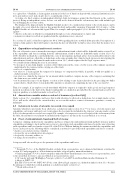Page 689 - SAIT Compendium 2016 Volume2
P. 689
IN 80 Income Tax acT: InTeRPReTaTIon noTes IN 80
to a capital loss.* Similarly, a claim against an insurer for the loss of funds on deposit with a nancial institution is also not a personal-use asset and can give rise to a capital gain or loss.†
A victim of a thief acquires an independent delictual claim for damages against the thief known as the condictio furtiva.‡ Being an independent action, its base cost will not be derived from the stolen money but could include legal fees in bringing the recovery action.
The timing of the disposal under the Eighth Schedule needs to be considered in relation to the stolen money and to the right of recovery which the taxpayer has against the thief and possibly an insurer. Paragraph 13(1)(b) and (c) of the Eighth Schedule are relevant in this regard. Thus, for example, under paragraph 13(1)(b) the time of disposal of a claim against –
• a thief is on the date on which it is extinguished through recovery, abandonment or expiry; and
• an insurer is when it is settled or repudiated and the repudiation is not contested.
See sections 11 and 12 of the Prescription Act 68 of 1969 regarding the date on which debts prescribe. Prescription of a victim’s claim against a thief only begins to run from the date on which the victim becomes aware that the monies were stolen.
4.3 Expenditure on legal and forensic services
The cost of forensic services incurred to investigate embezzlement, fraud or theft will be deductible under section 11(a) if the expenditure and losses resulting from the embezzlement, fraud or theft are deductible under section 11(a). See COT v Rendle§ in which the court held that the costs of investigation and legal advice were inextricably related to the embezzlements and were allowable as deductions on the same grounds. Any claim for legal expenses in investigating the embezzlement, fraud or theft must be made under section 11(c), which requires that the legal expenses must –
• be actually incurred during the year of assessment;
• be in respect of any claim, dispute or action of law which arises in the course of or by reason of the ordinary operations
undertaken by the taxpayer in the carrying on of the trade;
• not be of a capital nature;
• not relate to a claim against the taxpayer for damages or compensation which, if payable, would not qualify as a
deduction under section 11(a);
• not relate to a claim by the taxpayer for an amount which would not comprise income of the taxpayer (assuming that
the claim were successful); and
• not be incurred in respect of any dispute or action at law relating to any claim referred to in the preceding two bullet
points (that is, which relates to non-deductible amounts or amounts not comprising income as the case may be).
Thus, for example, if an employee steals trust funds which the taxpayer is required to make good, any legal expenses incurred in relation to the theft of the funds would qualify as a deduction provided that the amount made good by the taxpayer quali es as a deduction under section 11(a).¶
4.4 Amounts recoverable under a contract of insurance [section 23(c)]
Under section 23(c) expenditure and losses that would otherwise be allowed as deductions, for example under section
11(a), will not be allowed to the extent that they are recoverable under a contract of insurance, guarantee, security or indemnity.
4.5 Inclusion in income of amounts recovered or recouped
Amounts which have previously been allowed as a deduction under section 11(a)** for losses of stolen money and expenditure on forensic and legal costs to investigate the loss must be included in the taxpayer’s income under section 8(4)(a) if subsequently recovered or recouped. For example, if a taxpayer recovers all or part of the stolen money from the thief, the amount recovered must be included in the taxpayer’s income in the year in which it is recovered.
4.6 Proof of embezzlement, fraud and theft of money
A taxpayer claiming a deduction for expenditure and losses owing to the embezzlement, fraud and theft of money and for expenditure pertaining to legal and forensic services to investigate such expenditure and losses bears the onus of proving such expenditure and losses under section 102 of the TA Act. Without limiting the manner in which the expenditure and losses can be proven, the following will be considered as prima facie proof that such expenditure and losses occurred: • A police case docket reference number;
• A report by an accredited private investigator; • A report by a forensic auditor; or
• A charge sheet issued by a court.
A taxpayer will also need to prove the quantum of the expenditure and losses.
* Paragraph 53(3)(e) of the Eighth Schedule excludes from a personal-use asset a nancial instrument as de ned in section 1(1) and paragraph (a) of that de nition includes a deposit with a nancial institution.
† Under paragraph 53(3)(h) a short-term policy under the Short-Term Insurance Act, 1998, is not a personal-use asset to the extent that it relates to any asset which is not a personal-use asset.
‡ J C van der walt and J R Midgley Principles of Delict 3 ed (2005) LexisNexis Butterworths, Durban in 34.
§ Above at SATC 336.
¶ In ITC 1710 (1999) 63 SATC 403 (C) the court allowed legal expenses as a deduction under section 11(c) because
the damages to which they related quali ed as a deduction under section 11(a). ** Read with section 23.
saIT comPendIum oF Tax LegIsLaTIon VoLume 2 681


